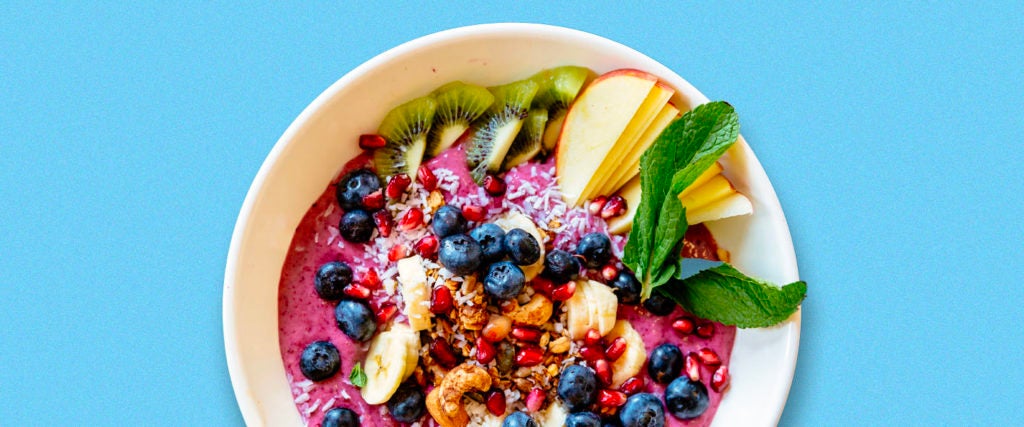The acai bowl is often thought of as the perfect breakfast. It’s fruity. It’s light. It’s commonly served by establishments that charge $30 for a cup of juice. But does it deserve all the prestige, or is an acai bowl just a high-calorie sugar soup?
Finish your juice and join me as we take a hard look at the ingredients in your average acai bowl.
How Many Calories in an Acai Bowl: The Math
Any number of ingredients can live inside an acai bowl, but there are plenty of mainstays that give us a good idea of how many calories we’re looking at. Here’s the estimated caloric breakdown:
- Acai Berries: 70 calories per 100 grams.
- Strawberries: 12 calories for three medium strawberries.
- Blueberries: Just over 10 calories in 10 blueberries.
- Bananas: About 50 calories per half banana.
- Coconut Flakes: Around 50 calories for a substantial sprinkling.
- Honey: 64 calories per tablespoon.
- Soymilk: Near 30 calories for a dash.
- Greek Yogurt: 12 calories per tablespoon.
- Granola: Around 100 calories for a quarter cup.
- Peanut Butter: Just under 100 calories per tablespoon.
When you add all these ingredients together, you end up with a total of 498 calories, which seems fairly standard among fully loaded acai bowls — Jamba Juice, for example, serves a 510-calorie bowl.
But of course, acai bowls come in an assortment of sizes, and the bigger the bowl, the more calories it has. Compared to Jamba Juice, Rush Bowls, a bowl-inspired establishment, offers a more straightforward 327-calorie acai bowl.
If you want to keep those calories low, watch your portion size and avoid dense ingredients, like coconut, peanut butter and granola.
Are Acai Bowls Good for You?
Now that you know where your calories are coming from, the more important questions are whether they’re healthy and which ingredients you should watch out for.
Overall, Dana Hunnes, dietitian at UCLA Medical Center and author of Recipe for Survival: What You Can Do to Live a Healthier and More Environmentally Friendly Life, says acai bowls are a good choice. “Acai is extremely healthy — lots of antioxidants, healthy fats and fiber,” she explains. The only ingredients she says you really need to watch out for are sugary syrups and equally sugary yogurts (commercial acai bowl slangers have been known to use sweetened frozen yogurt in their bowls). Even granola can be a haven for hidden sugars.
For example, that same Jamba Juice acai bowl contains a whopping 65 grams of sugar. Some of that sugar comes naturally from acai, strawberries, bananas and other fruits, which make it healthier than “added sugar,” but surely some sugar has been injected into there. When we’re dealing with added sugar, men should consume no more than 36 grams and women no more than 25 per day.
Otherwise, though, you’re in the clear, which means I owe acai bowls an apology: Sorry, acai bowls. I never should have doubted your healthiness.

